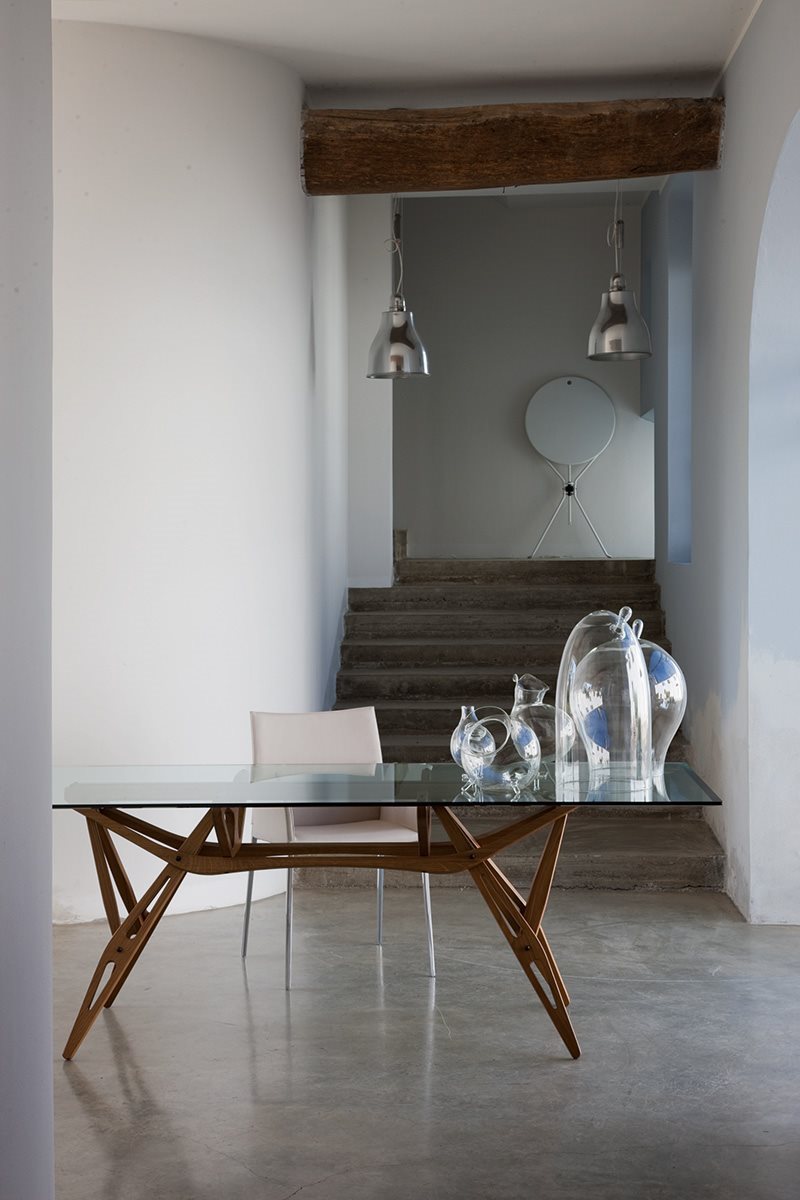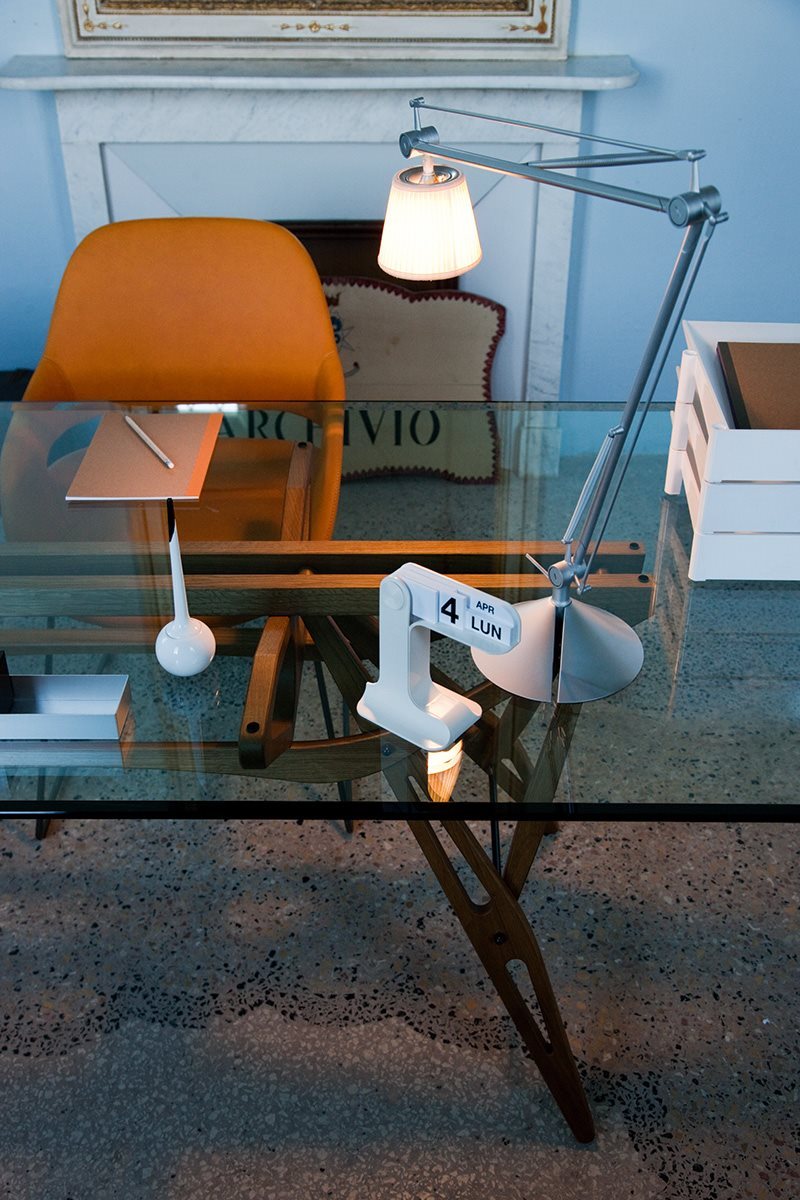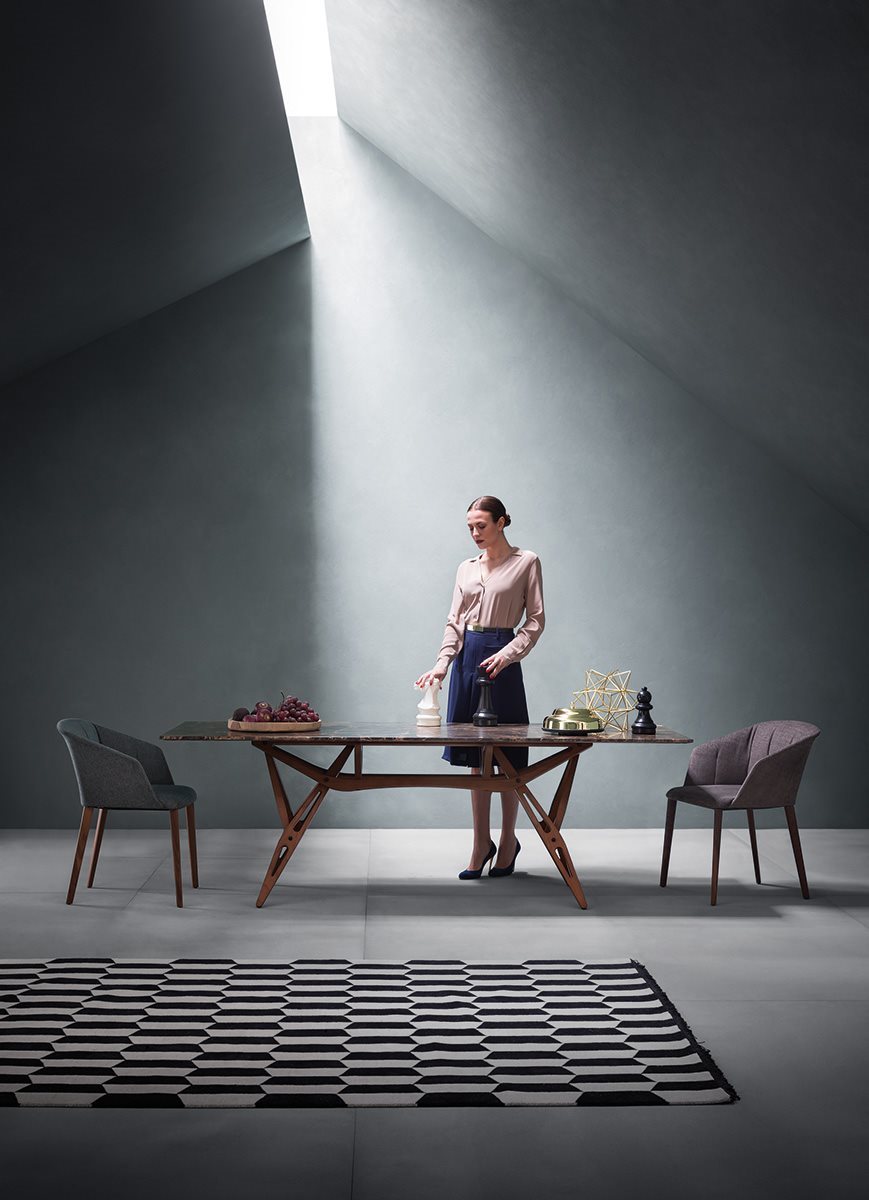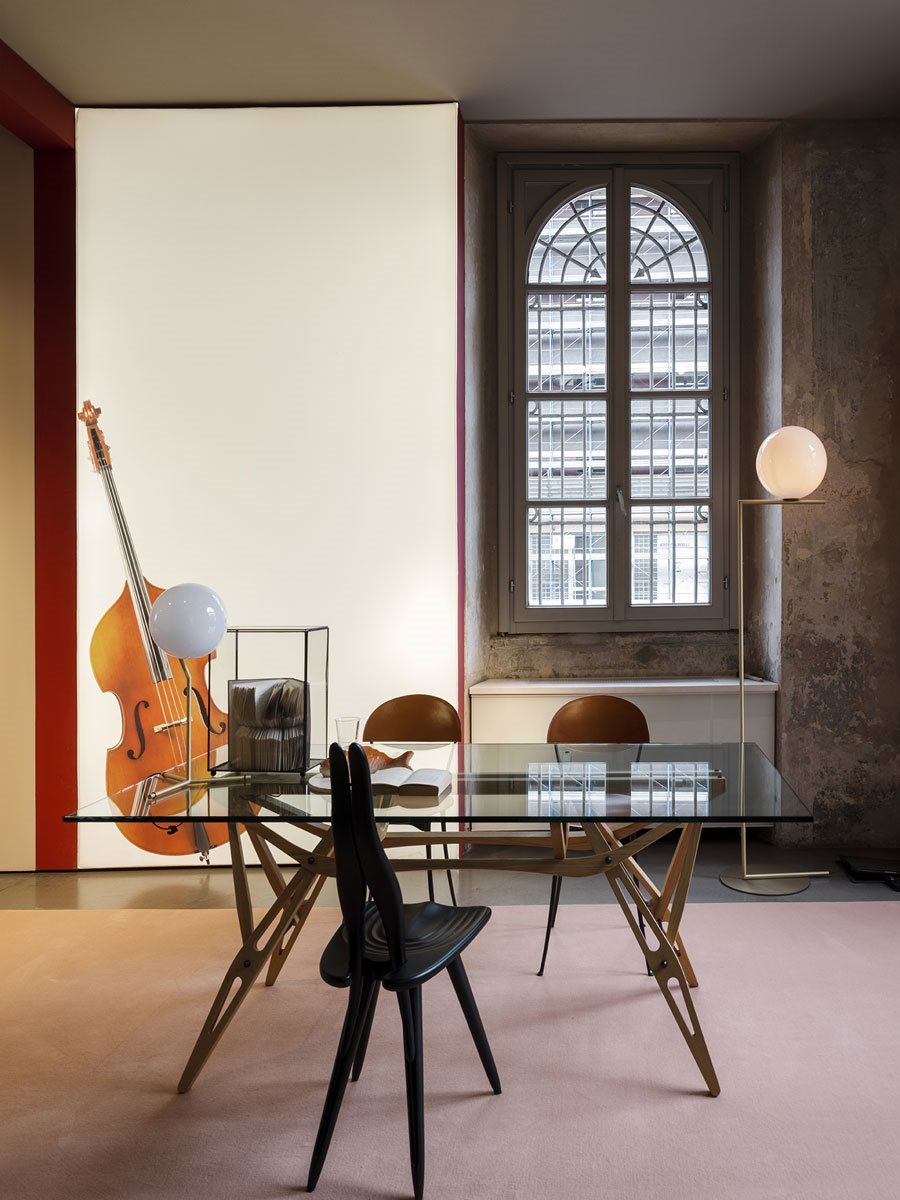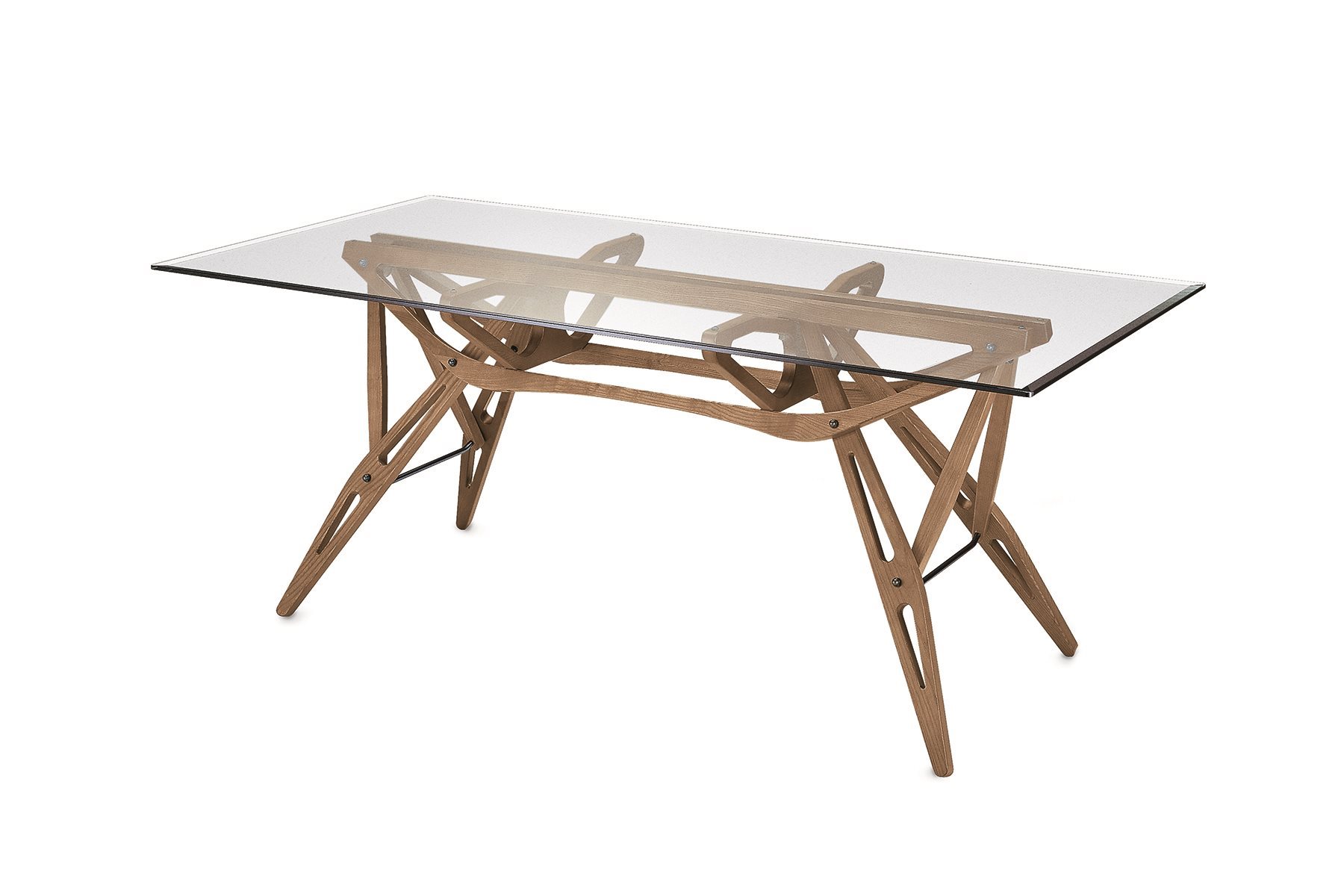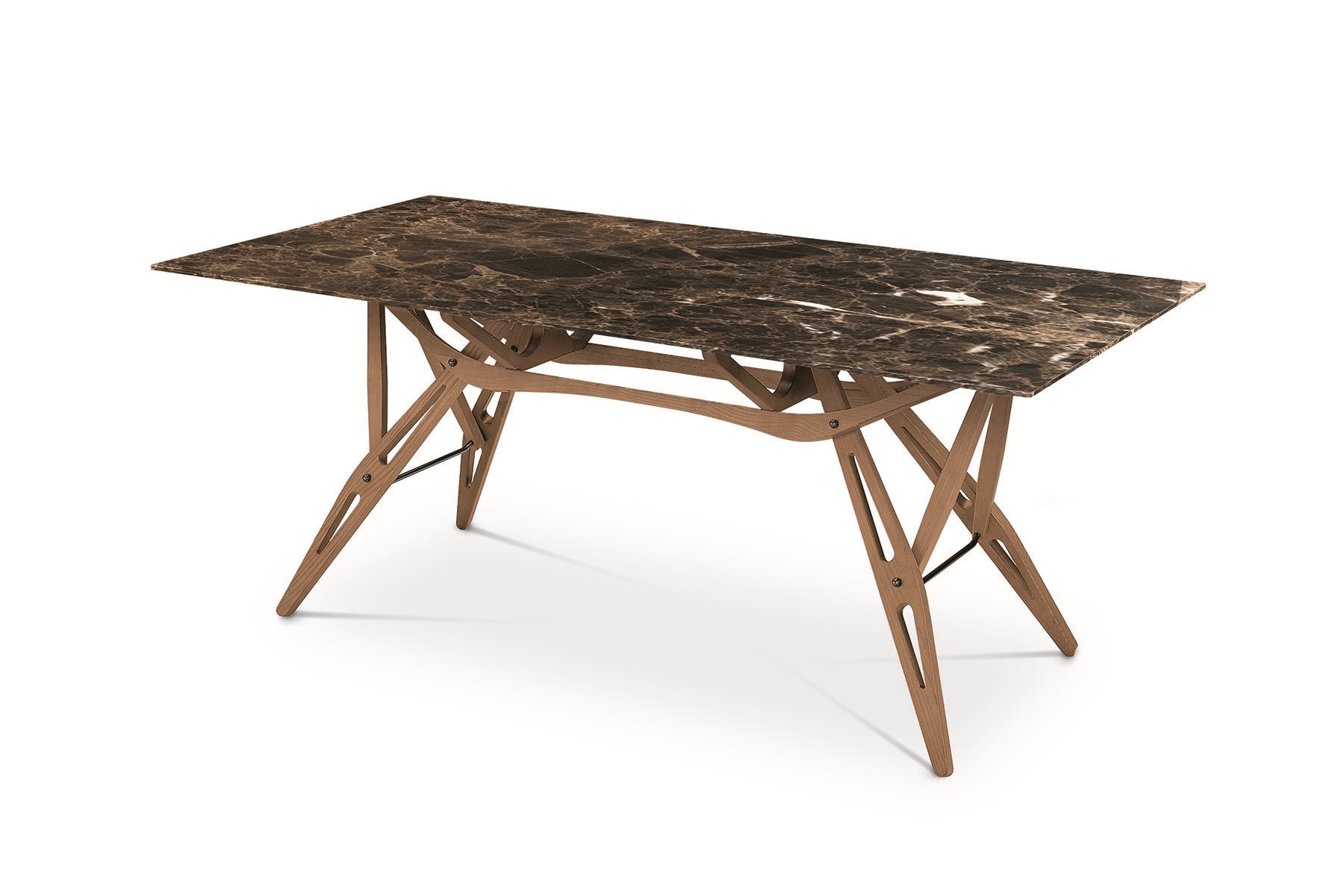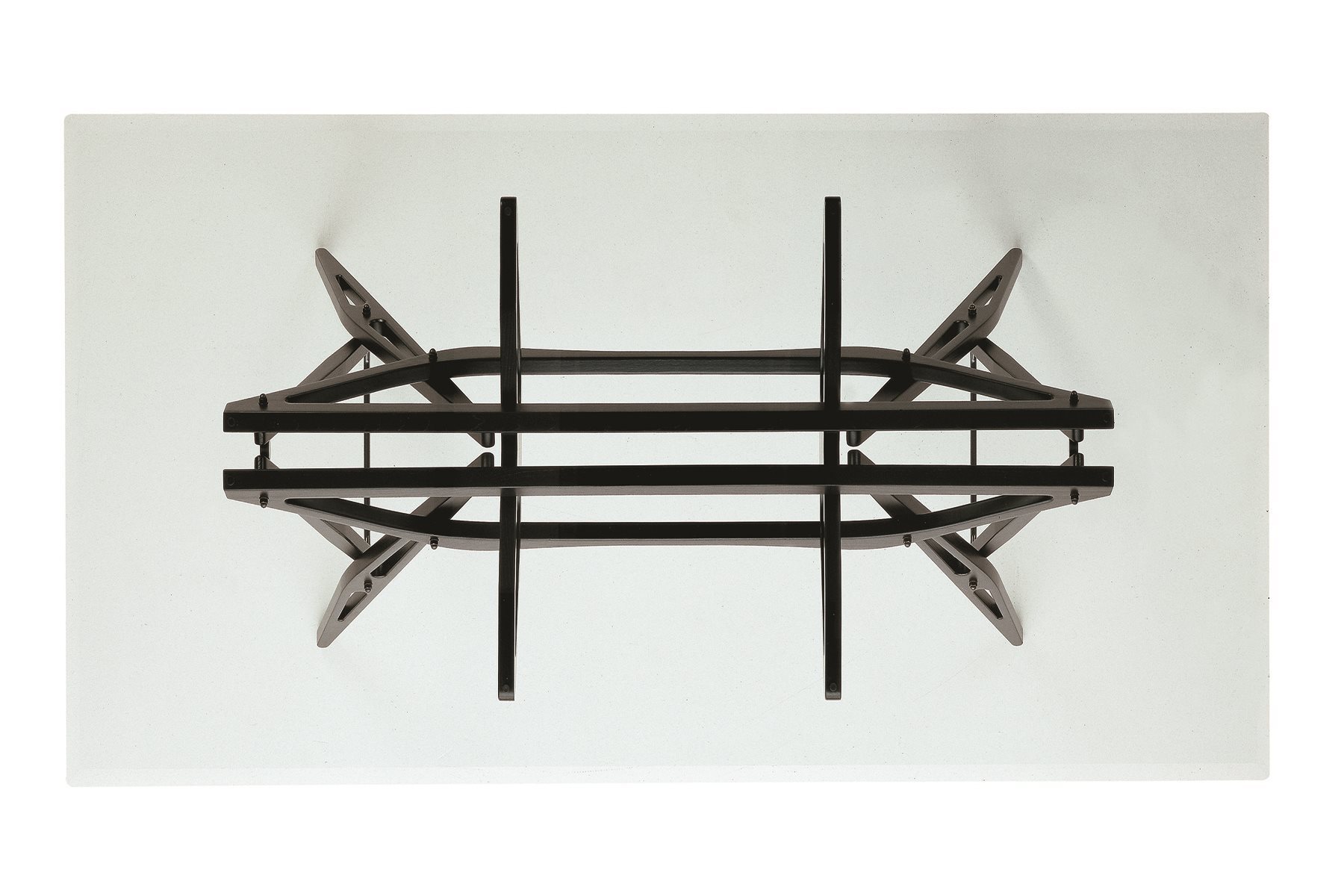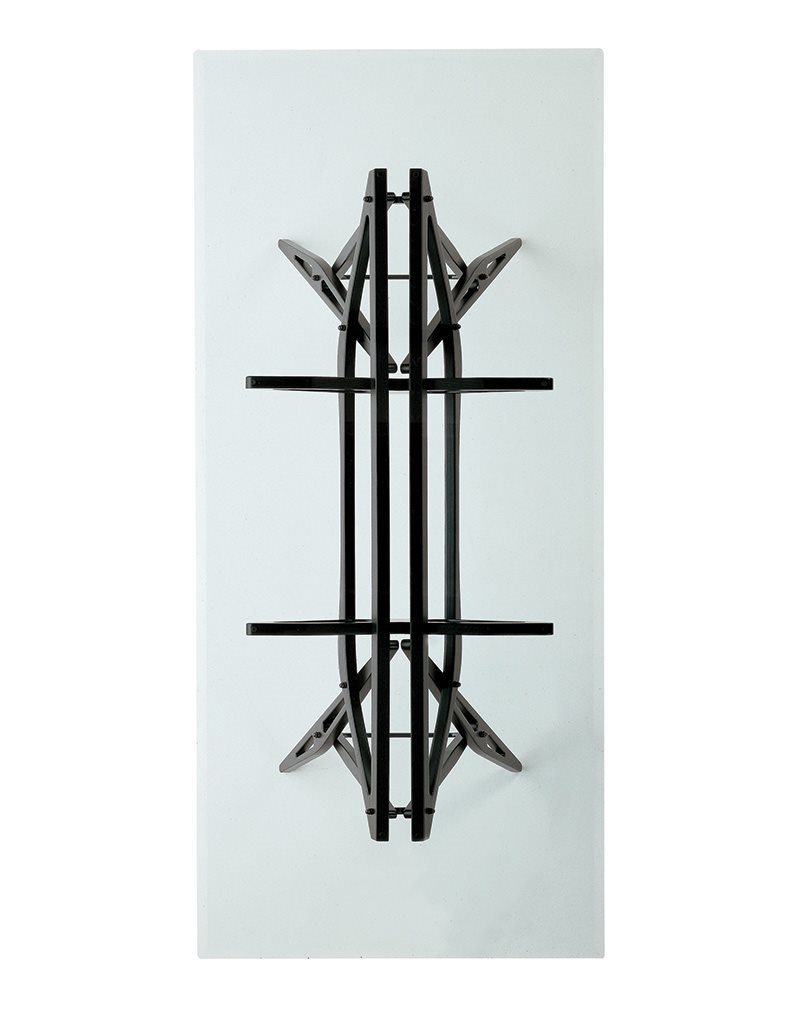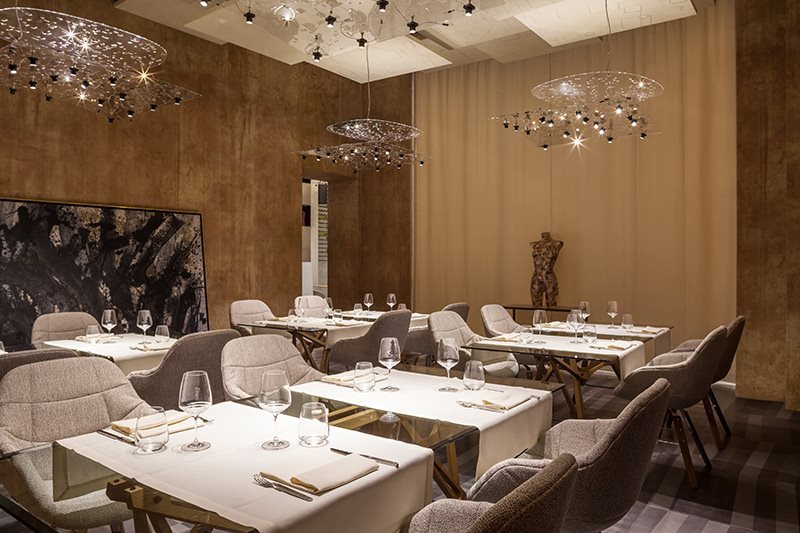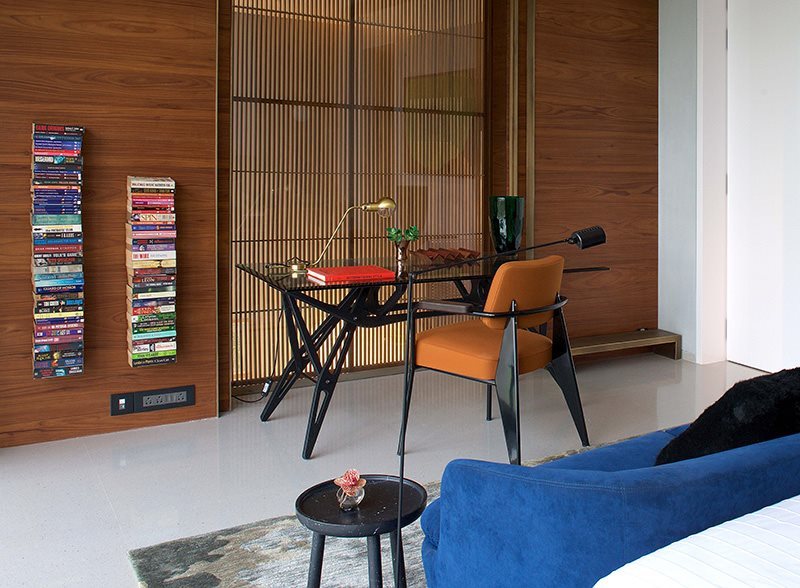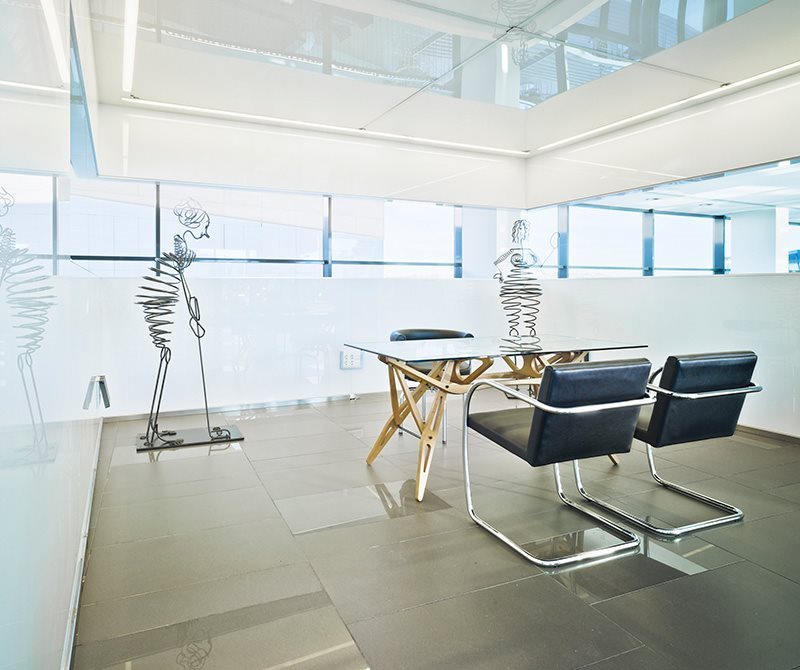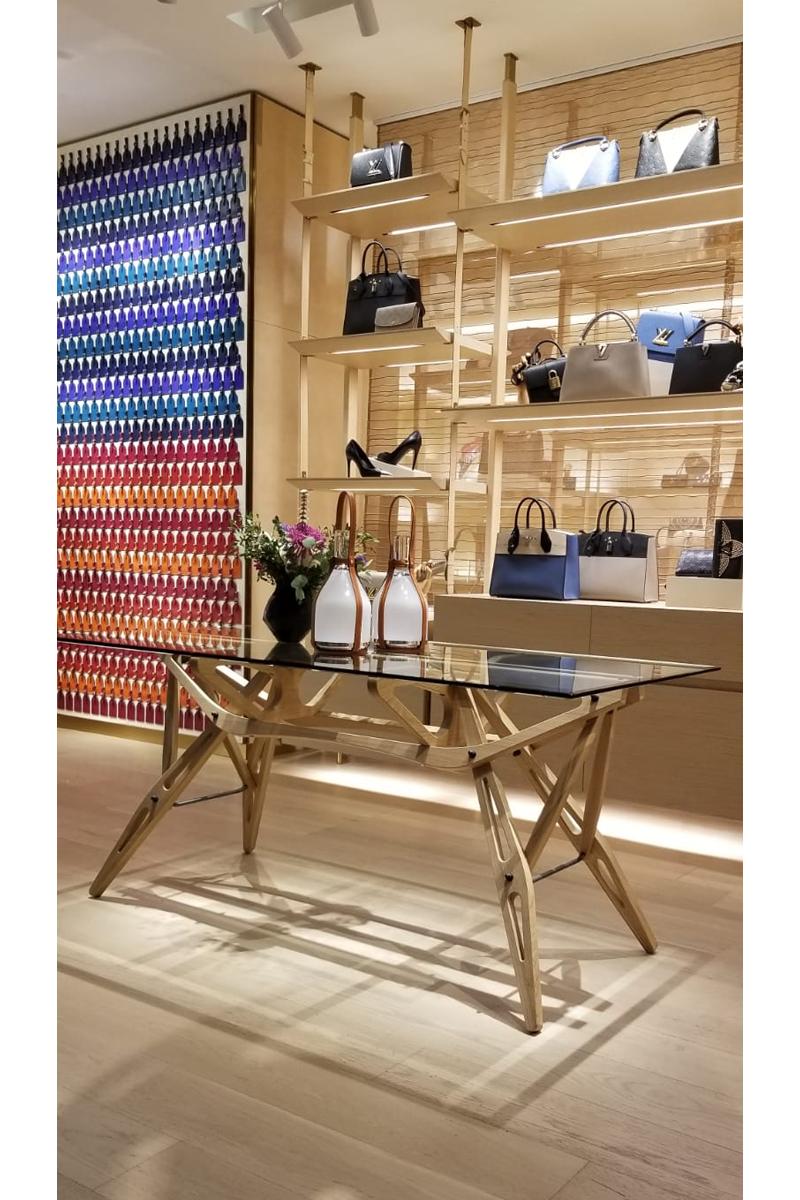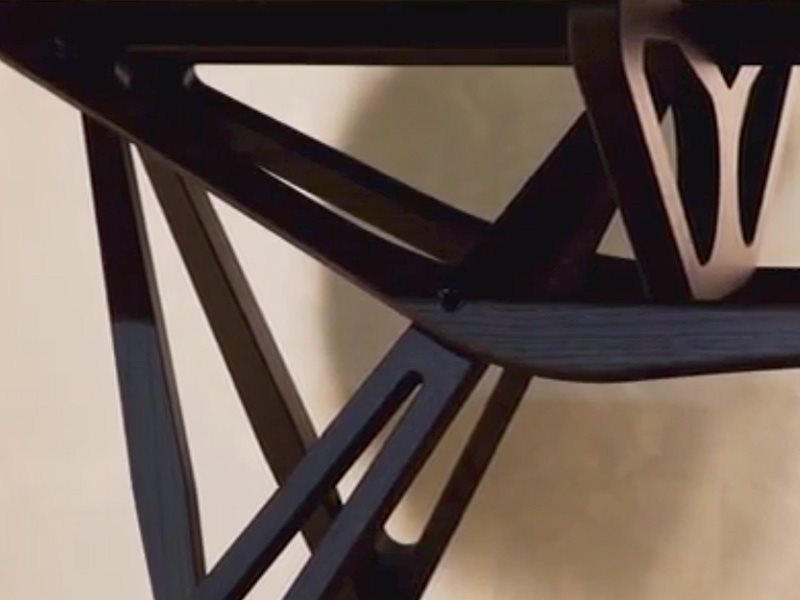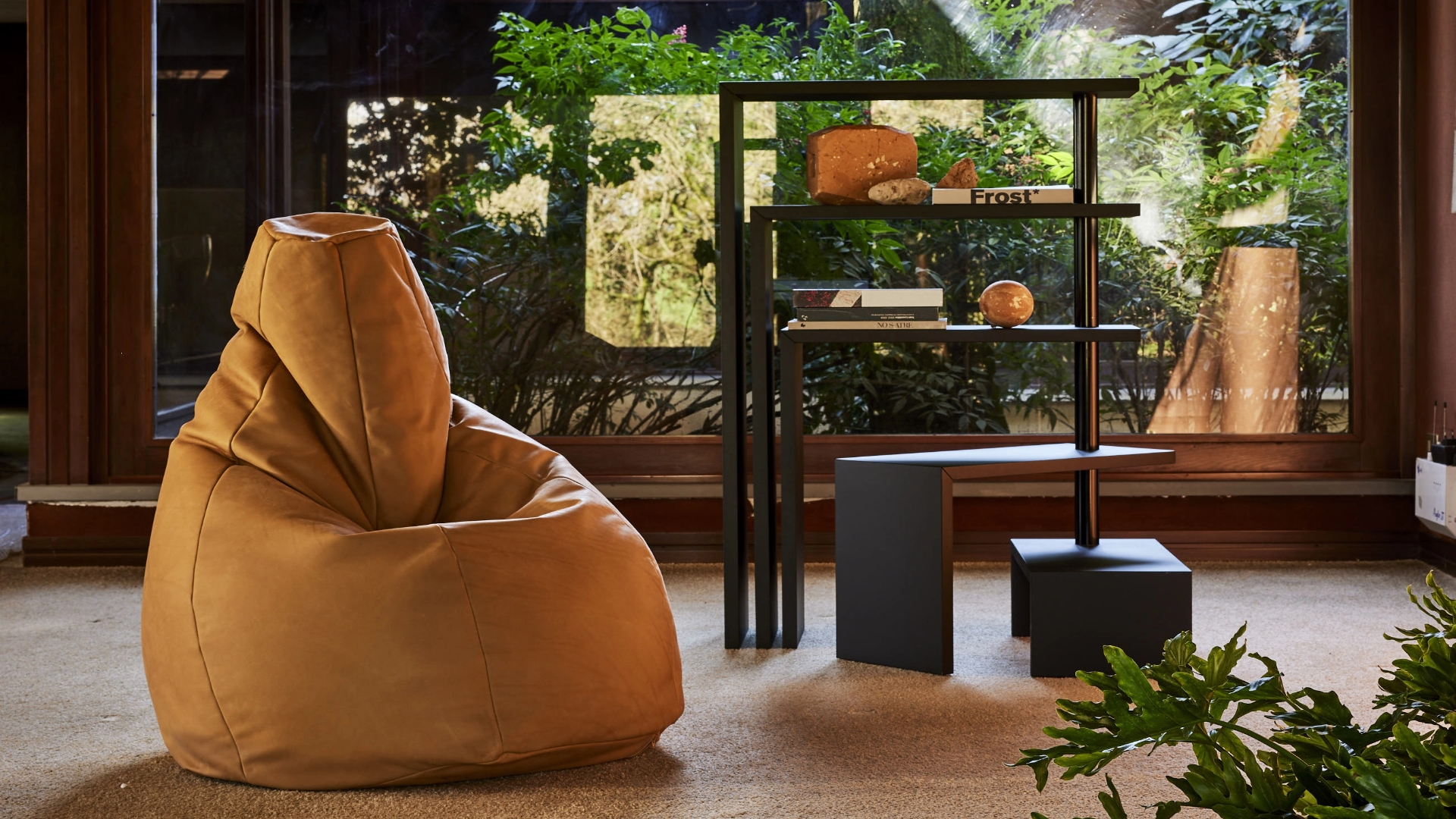Table. Clear plate glass top, with or without bevelled edges or in Emperador marble, with stainresistant protective varnish, in clear matt polyester. Frame in solid natural or orange or black varnished oak, or in Canaletto walnut-dyed oak; wax-finished varnish.
Articulate and complex shapes
Who knows what Carlo Mollino would have been capable of today, with access to carbon fibres or other composite materials, if in the 1950s he was able to create, using only solid wood and capable artisans, slender, lean and slim structures, equalled only in the contemporaneous constructions of Franco Albini, and the lightened struts of his Veliero bookshelf?
Articulate and complex shapes, but which once understood can astonish owing to the constructive intelligence of a perfect mechanism where every element slots together, matching, twinlike with precision to the others, through precise (and custom-design) metal joint systems. True masterpieces, like the Reale table, created with a compact, transparent skeleton embellished with a crystal top that seems to frame it.
In the mid Eighties Zanotta came across Carlo Mollino’s work and began producing certain items of furniture designed by this eclectic architect from Turin.
Critically refusing International Stylistic theories, Mollino proposed a new poetical language by privileging organic and sentimental shapes and the use of natural materials such as wood. Mollino’s works are a concentrate of imagination and irony.
In 1990 Zanotta re-edited the table Reale designed in 1947 for the offices of the Reale Mutua insurance firm in Turin. With the production of the Reale, Zanotta gives continuity to the research undertaken to recover objects from the past, representing key moments in the history of architecture and Italian design.
Larte Restaurant, Milan.
Private villa, India
Hotel La Finca in Orihuela, Alicante.
Louis Vuitton, Bogotá
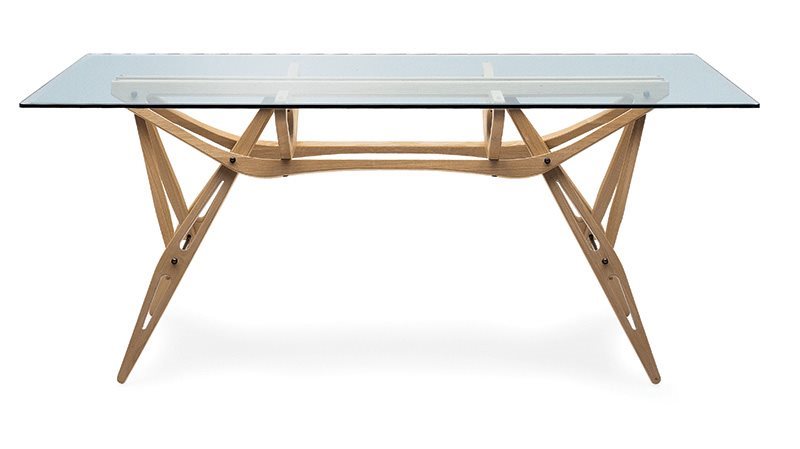
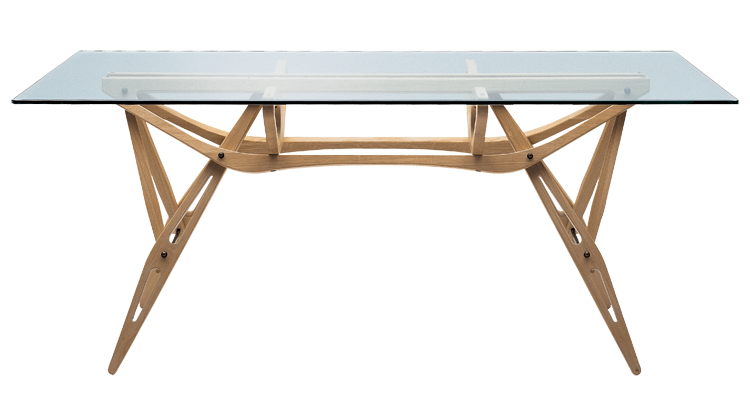
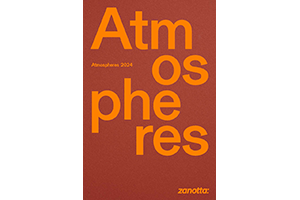

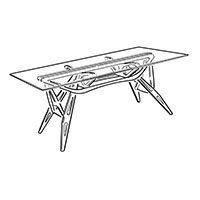
.jpg)
.jpg)
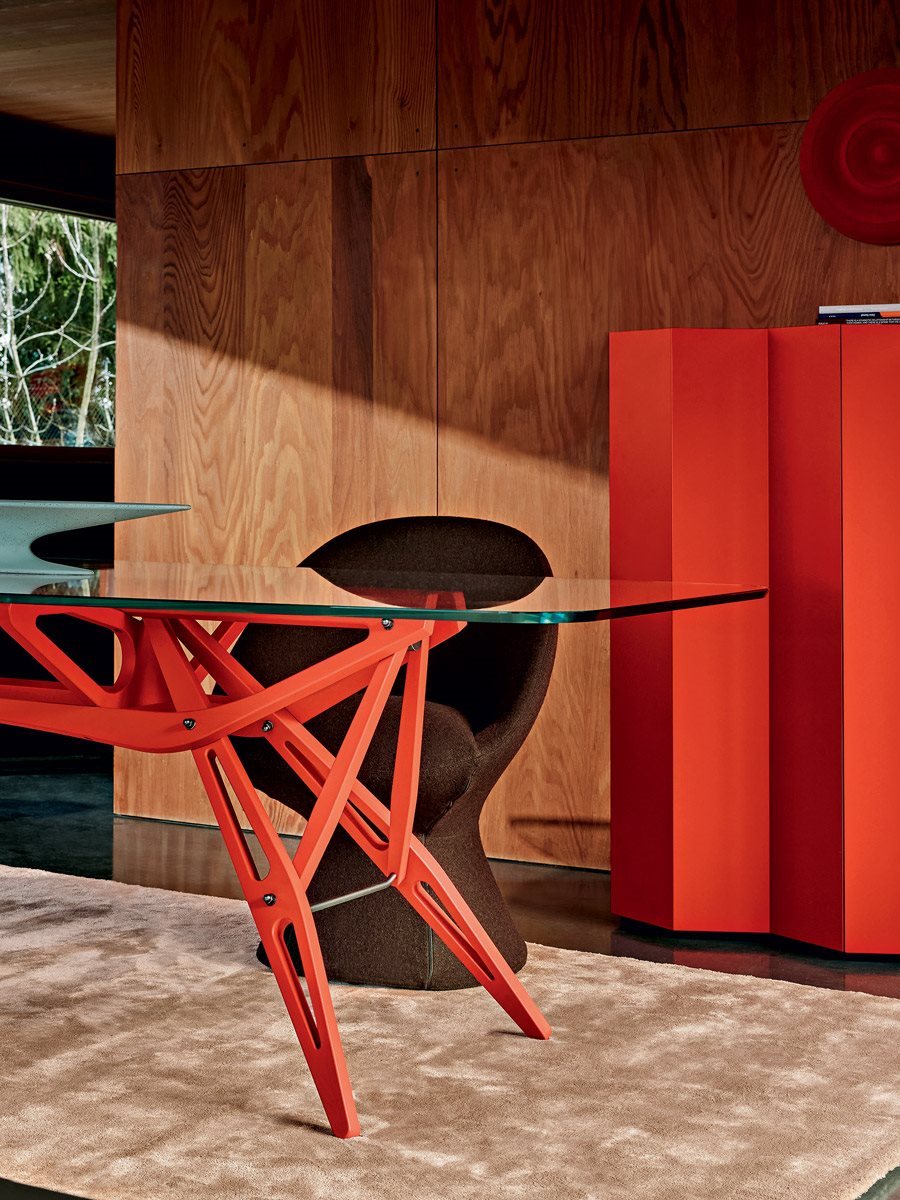
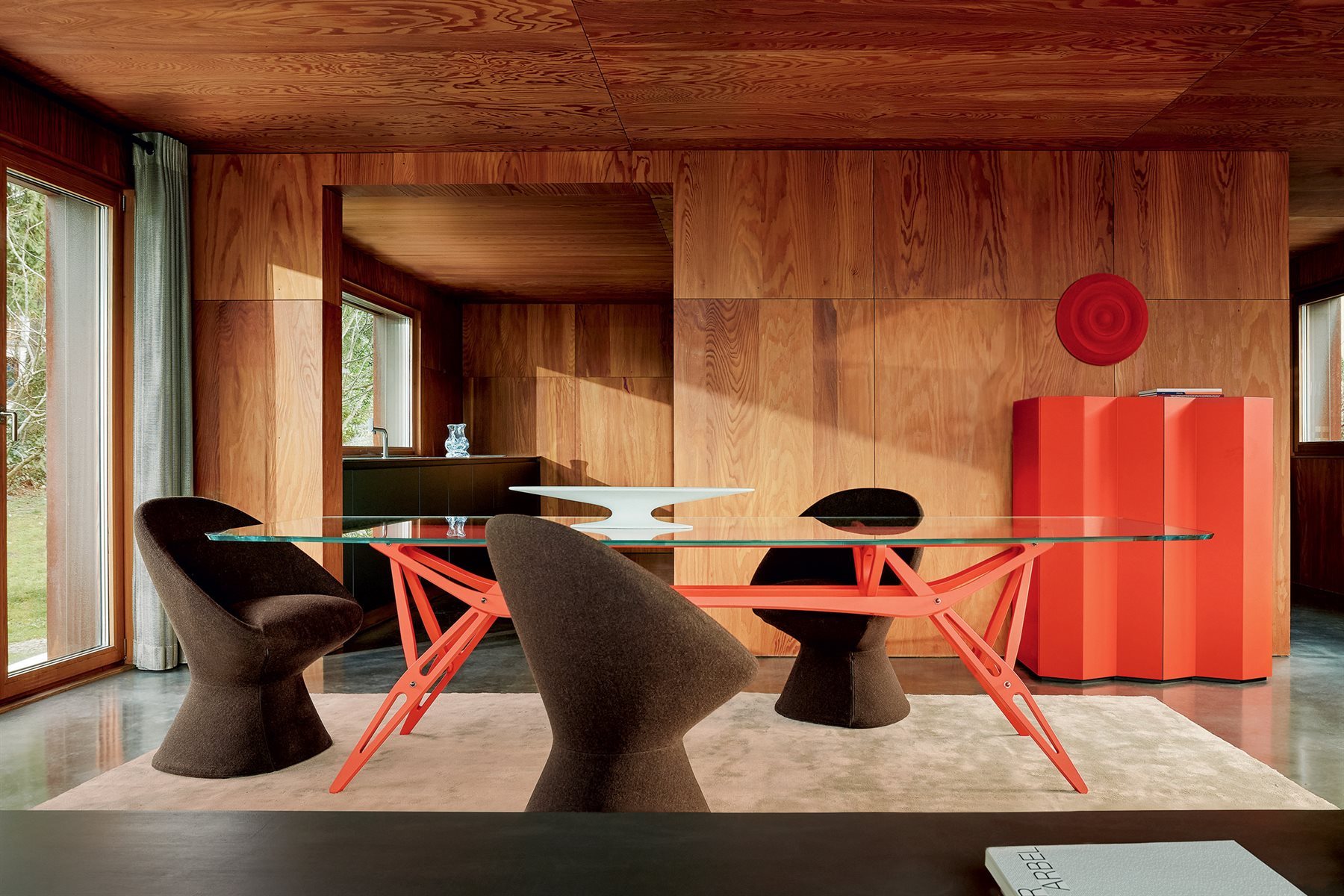
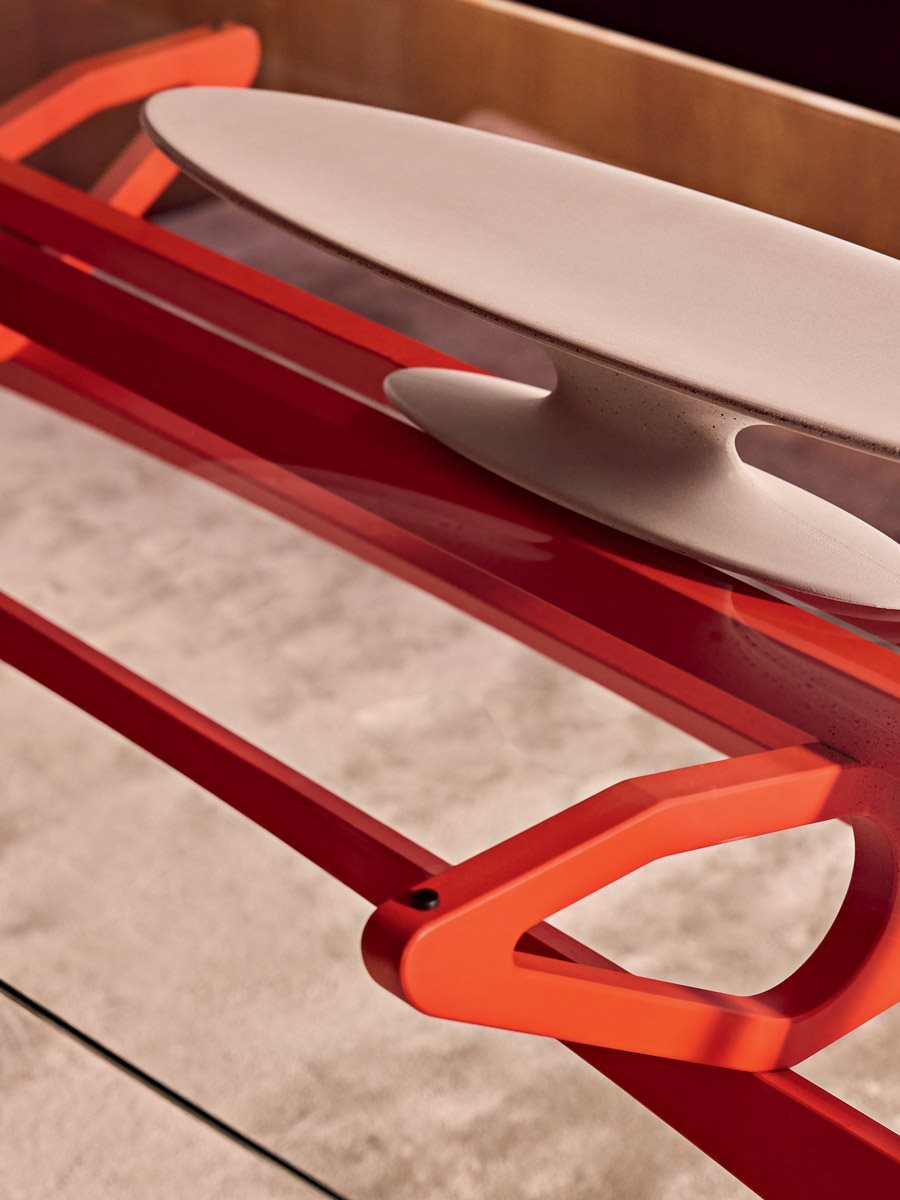
.jpg)
.jpg)
.jpg)
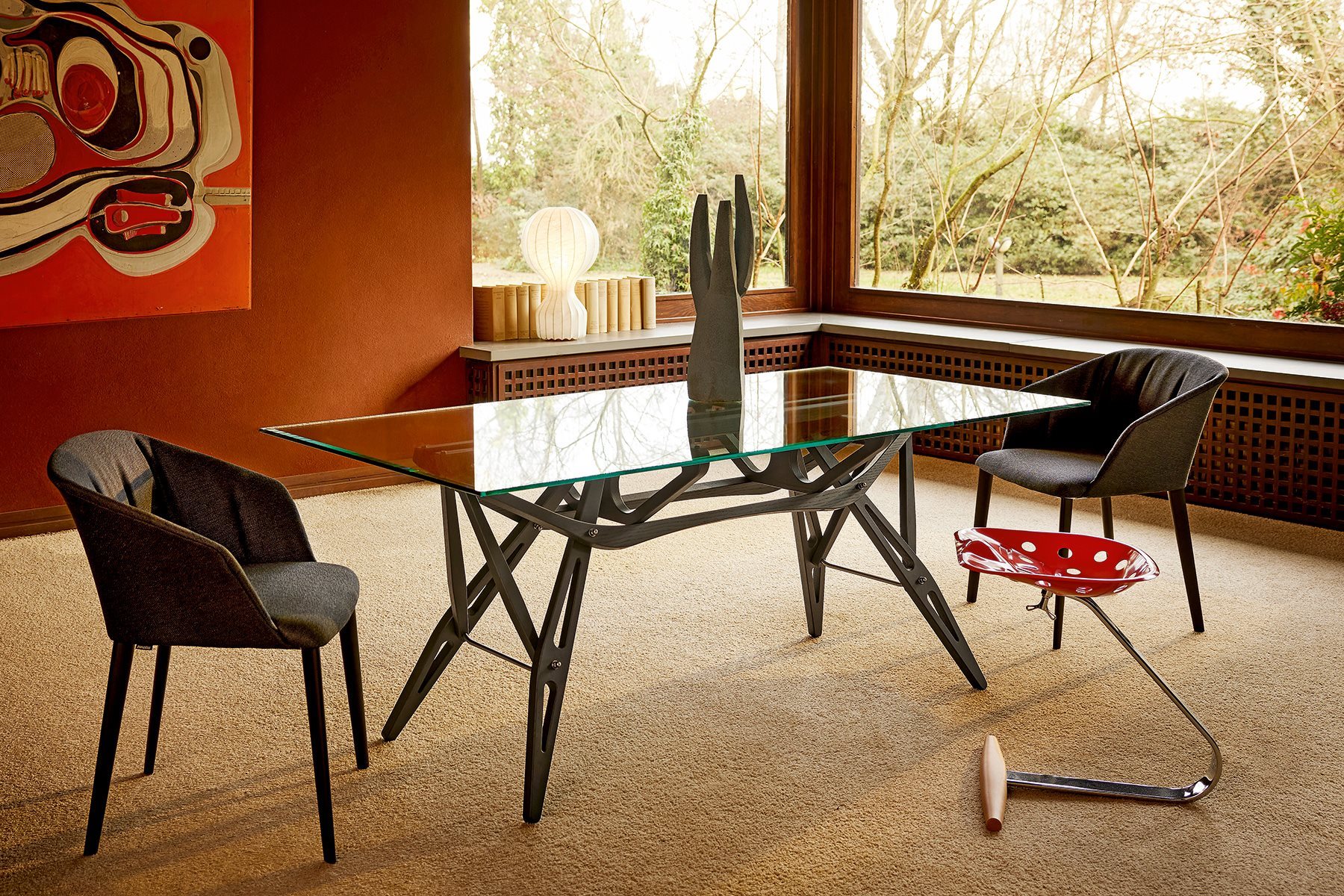
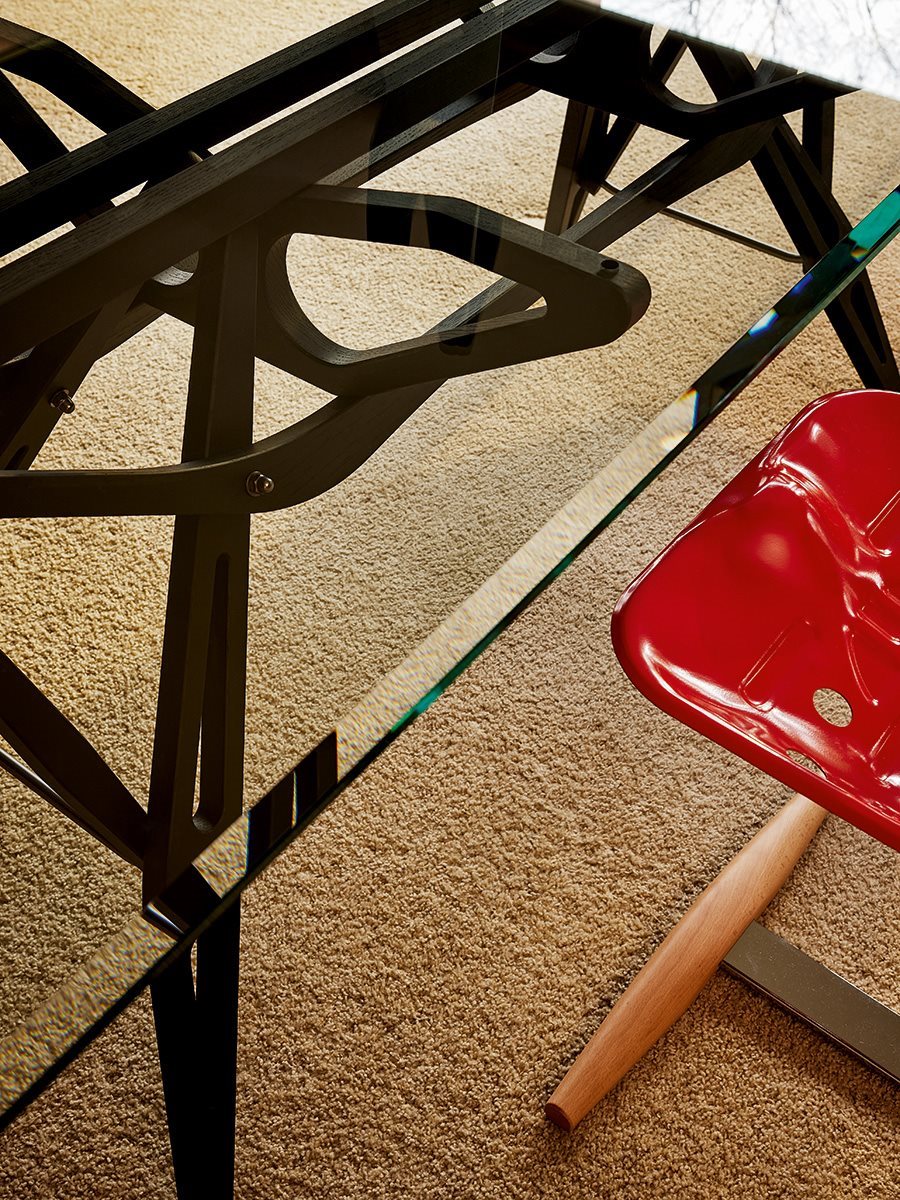
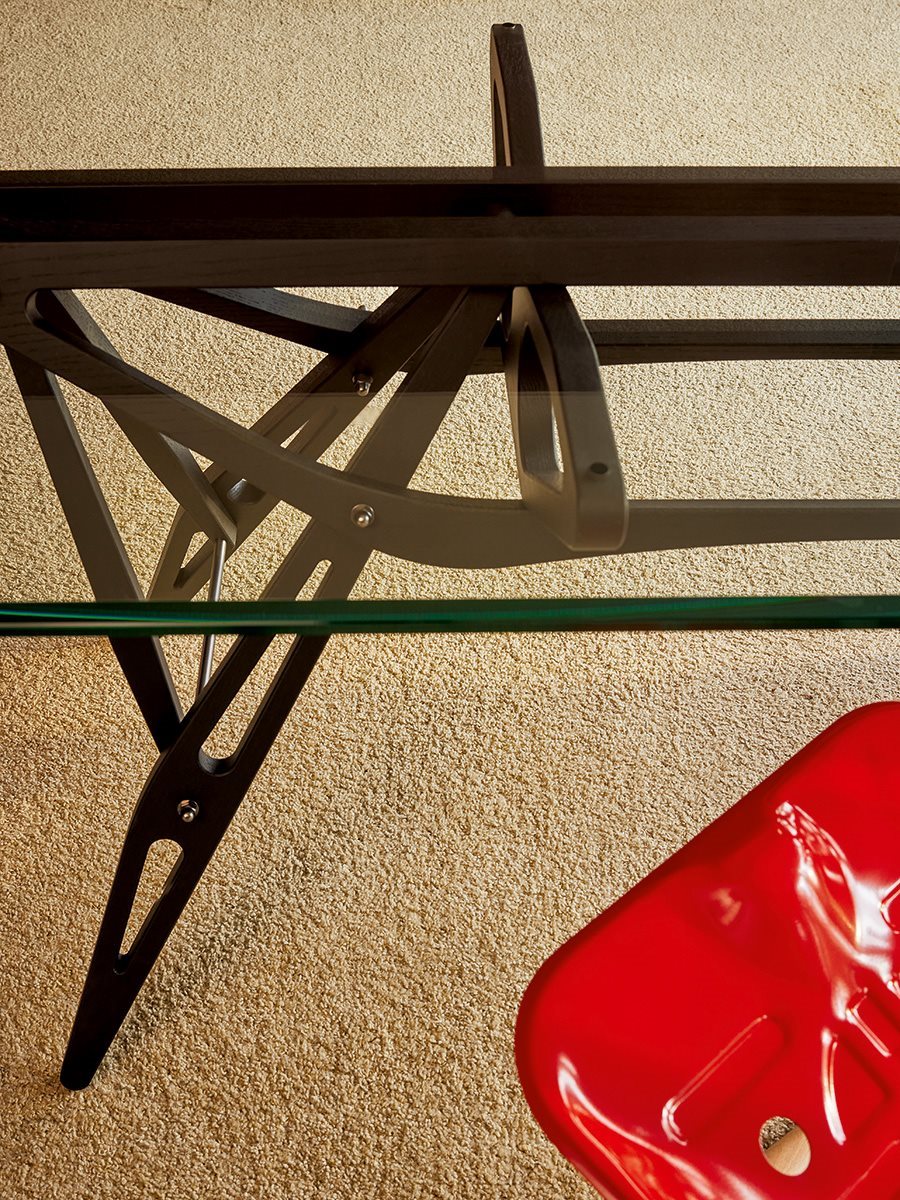
.jpg)
